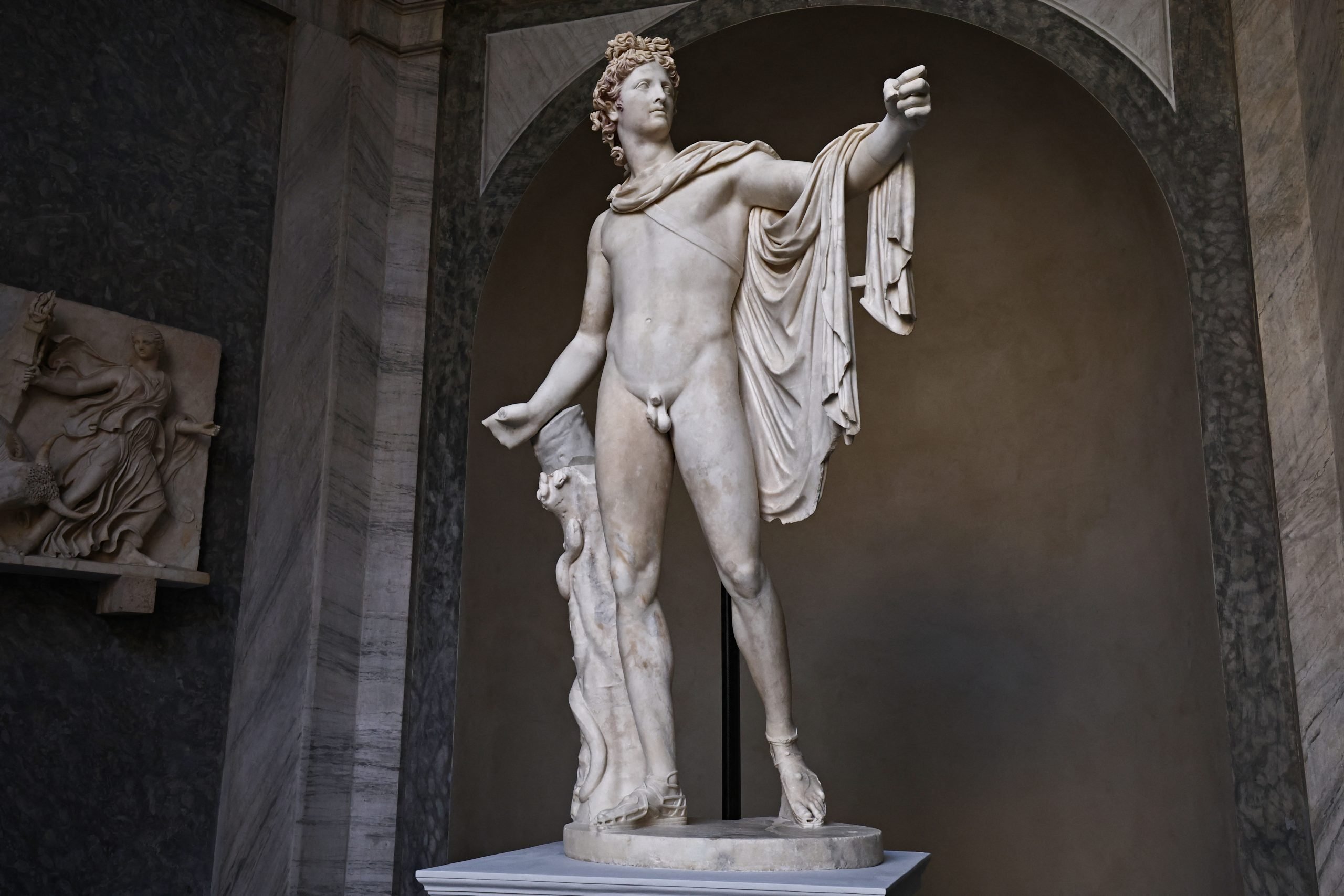
“Of all the works of antiquity that escaped destruction,” German archaeologist and art historian Johann Joachim Winckelmann once said of the Apollo Belvedere, a beloved sculpture from the Vatican Museums that recently emerged from an intensive, 5-year-long restoration project, “the statue (…) represents the highest ideal of art.”
The 7.3 feet tall sculpture represents the eponymous Greek god of light, poetry, music, dance, healing, and truth. He’s also the god of archery, which is evident from the statue’s pose. Left arm raised, he appears to have just fired an arrow. Although its target is unknown, art historians have suggested it could have been the giant Tityos, who according to myth Apollo defeated with help from Artemis, or Python, the serpent guarding the Oracle of Delphi.
Often praised for its use of contrapposto, a sculpting term that refers to the asymmetrical placement of a figure’s limbs so that the alignment of the shoulders contrasts with that of the legs, the Apollo Belvedere was created sometime between 120 and 140 AD. In a way, the sculpture is older still, as this version was actually a replica of a bronze cast from the 4th century BC by the ancient Greek sculptor, Leochares.
Like many sculptures from antiquity, the Apollo Belvedere disappeared following the fall of the Roman Empire, only to be rediscovered in the years leading up to the Italian Renaissance. Found in Anzio, formerly Antium, in the late 14th or early 15th century, the sculpture passed through private hands before eventually ending up in the possession of cardinal Julius II who, upon being named Pope in 1503, took it with him to the Vatican. There it became the foundation of the Vatican Museums’ collection, which includes many other Greco-Roman and Egyptian artifacts.
The Apollo Belvedere at the Vatican Museums. Photo: Andreas SOLARO / AFP.
Being almost as old as recorded history itself, it should come as no surprise that the Apollo Belvedere has been subjected to many restoration efforts over the course of its existence. The first major restoration took place in 1532, when Giovanni Angelo Montorsoli—a pupil of Renaissance master Michelangelo—reattached the statue’s hands and forearms. The next major renovation project took place in 1924, following by a third in 1999.
The most recent—and invasive—restoration began in 2019, when the sculpture was removed from public display after curators identified small but concerning cracks in its legs—a condition one of the employees, Guy Devreux, described as “incredibly dramatic.”
The Apollo Belvedere without its forearms. Photo: Art Media/Print Collector/Getty Images.
Delayed by the coronavirus pandemic, when museums around the world temporarily went into lockdown, the restoration focused on fortifying the sculpture’s compromised structural integrity, rather than its outward appearance. Financially supported by the 2021 Art Conservation Project of Bank of America and various chapters of the Patrons of the Arts in the Vatican Museums, among other organizations, the restoration team repaired multiple fractures in the sculpture’s legs and knees in addition to restoring its cream color with the help of lasers, before reattaching the sculpture to its base with a carbon fiber rod.
“This type of restoration,” Barbara Jatta, director of the Vatican Museums, told Reuters after the project had neared its end, “is the expression of what we want the Vatican Museums to be.” Thanks to the Museums’ efforts, the Apollo Belvedere can be admired by many generations to come.